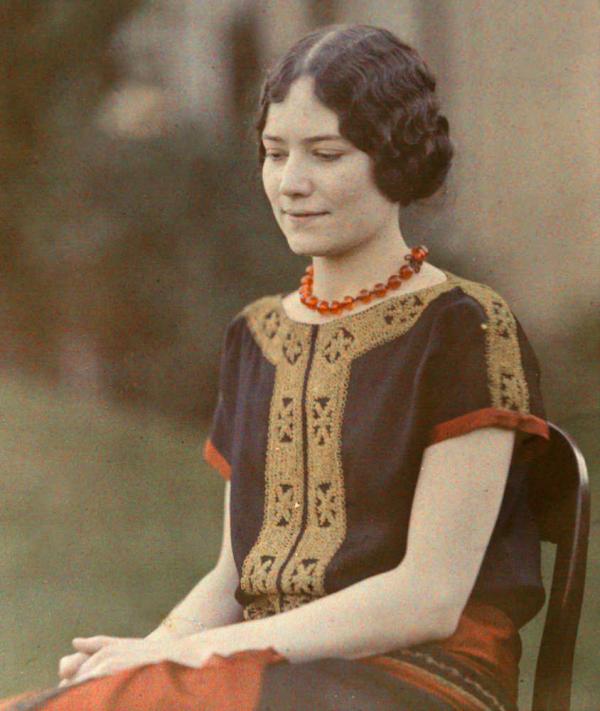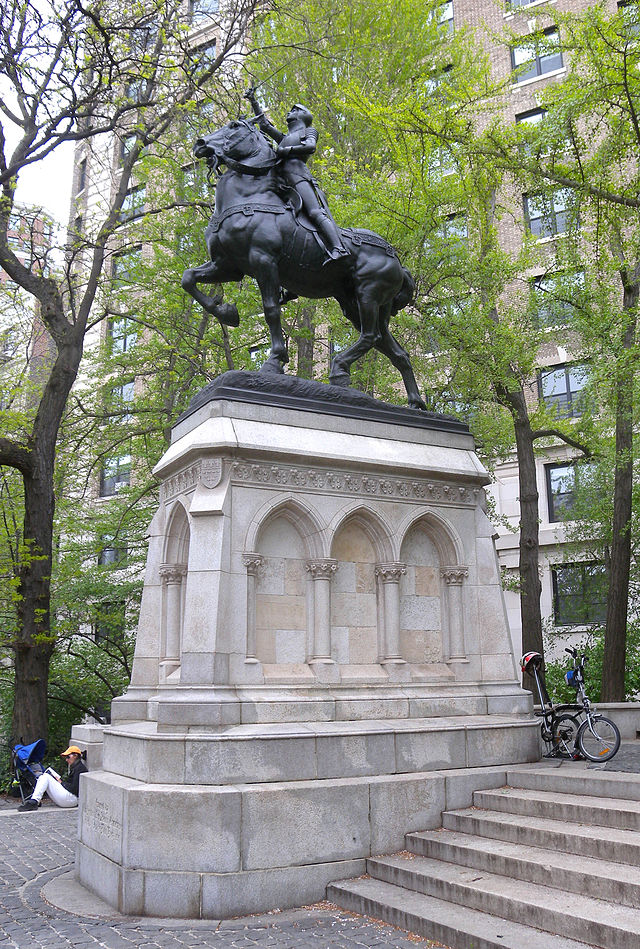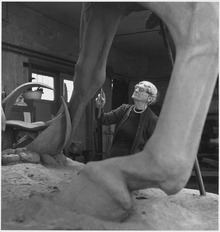Anna Vaughn Hyatt Huntington (1876-1973)

Huntington (in 1924) studied in Boston, New York, and in Europe. Many of her works incorporate animals, especially horses, which show an accurate knowledge of animal anatomy developed on childhood field trips with her biologist father and on visits to her brother’s Maryland farm.
Initially, however, it was her sister who "was going to art school a great deal of the time and it was through her influence really that I started working." (Smithsonian 1964 interview.) When Huntington was "around seventeen or eighteen" her sister asked for help with a sculpture that included an animal because, said her sister, "I can't do animals; I don't know anything about them and you've studied animals ever since you were knee-high to a grasshopper."
So Huntington helped her sister. "But my main object in life was to be a violinist. I studied violin for about seven or eight years, very hard. I started about fourteen and later on I found that sculpture was more my line so I turned way and did sculpture purely."
Joan of Arc, n.d.
bronze
Museum purchase, 2011.2

The renowned and prolific American sculptor Anna Vaughn Hyatt Huntington (pictured in a pre-1917 portrait by Marion Boyd Allen) often created multiple interpretations of the same subject. The first of her equestrian sculptures of Joan of Arc was exhibited in the prestigious Paris Salon of 1910 and earned her the first-place award; but the award was taken back when the judges stated that the work was too good to have been created by a woman.

A monumental and still standing version was installed on New York City’s Riverside Drive in 1915. It was the first public monument in New York City by a woman, and also the first to depict a real woman rather than some mythical figure. There are other large versions of this Joan of Arc in San Francisco, Gloucester MA and Quebec City, Quebec. Hickory Museum of Art’s undated table-sized rendition is stamped “Number Five.”
In a Smithsonian Institution interview in 1964 Huntington said about the much-depicted Joan of Arc. “And my challenge was to get a composition that was original, that hadn't really been done before. That was the fun of it." One way that it was original was that it was clad in armor authentic of Joan's time.
At first, Huntington produced small works through the Boston metalwork firm Shreve, Crump and Low; but for her monumental works she used New York foundries that produced her works from her equally monumental models (such as here in 1944). In the late 1930's, Huntington began experimenting with aluminum, a lightweight and highly portable medium that allowed for more dynamic compositions. Multiple copies of her smaller works always sold well, especially those featuring animals, and she was able to support herself comfortably even before her marriage.

With her husband, New York philanthropist Archer M. Huntington, she built Brookgreen Gardens on the South Carolina coast, near Myrtle Beach. In 1931, they opened this property as the first public sculpture garden in the United States, with a display of about 1,445 figurative American sculptures by Huntington and others including two by her sister. Many of Huntington's works continue to be displayed there and elsewhere throughout the United States and the world to this day.
Four of Huntington's works were part of the 2017 HMA exhibit Woman Made that showcased works by women artists in HMA's permanent collection.
Link to more about Huntington and her extensive success as a sculptor.
Link to SouthCarolinaETV video about Huntington and her work.
First posted June 21, 2015
Post by Karin Borei, HMA Project Coordinator, writer and editor as needed, and HMA blogger since our blog's inception in March 2015.

